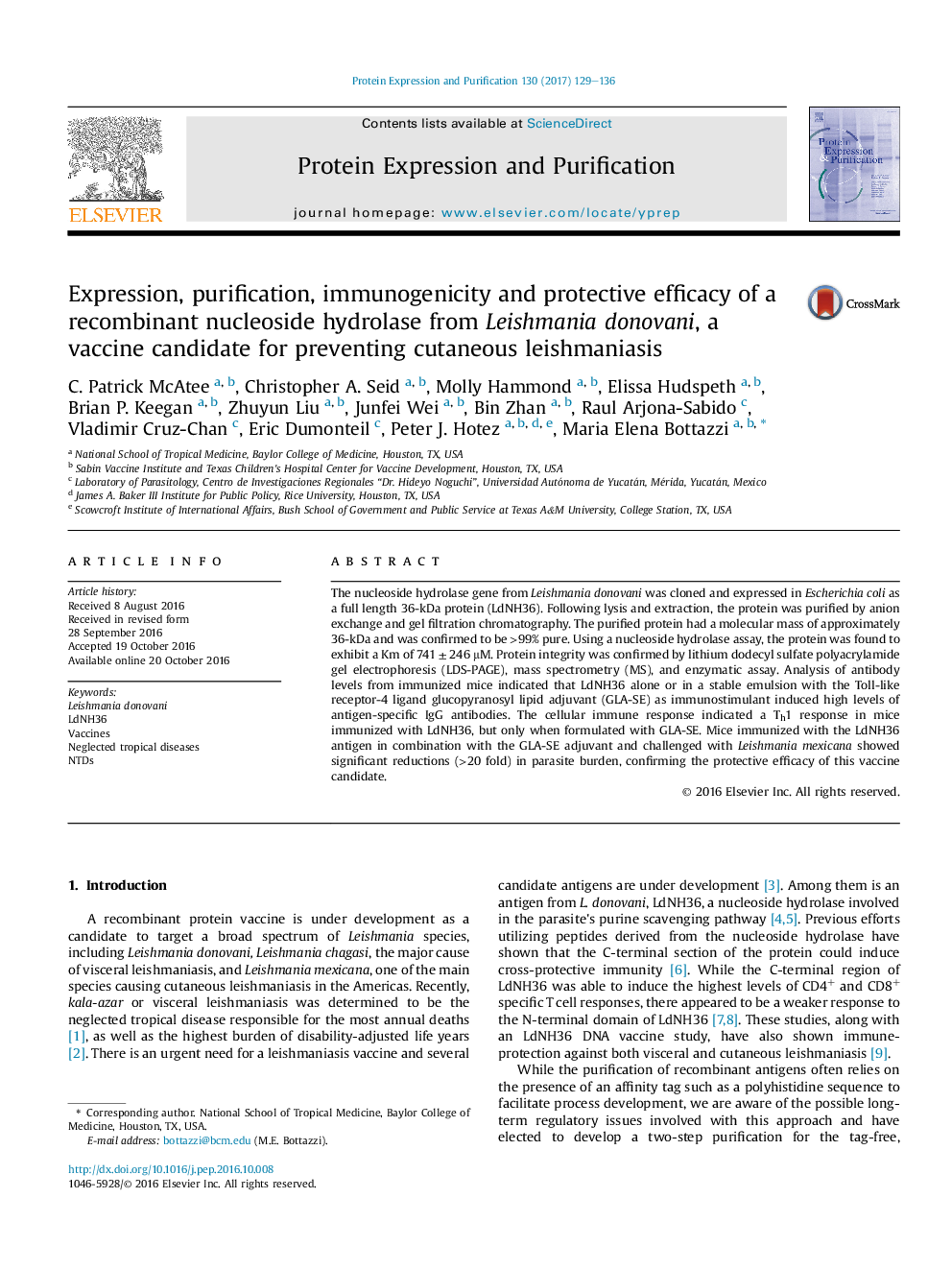| Article ID | Journal | Published Year | Pages | File Type |
|---|---|---|---|---|
| 5516062 | Protein Expression and Purification | 2017 | 8 Pages |
â¢A Leishmania donovani nucleoside hydrolase is expressed and purified from E. coli.â¢Process monitoring and yields are determined by mass spectrometry using the “High 3” method.â¢The L. donovani protein was found to be immunogenic and suitable for vaccine studies.â¢The process represents a scalable, lost-cost production method.
The nucleoside hydrolase gene from Leishmania donovani was cloned and expressed in Escherichia coli as a full length 36-kDa protein (LdNH36). Following lysis and extraction, the protein was purified by anion exchange and gel filtration chromatography. The purified protein had a molecular mass of approximately 36-kDa and was confirmed to be >99% pure. Using a nucleoside hydrolase assay, the protein was found to exhibit a Km of 741 ± 246 μM. Protein integrity was confirmed by lithium dodecyl sulfate polyacrylamide gel electrophoresis (LDS-PAGE), mass spectrometry (MS), and enzymatic assay. Analysis of antibody levels from immunized mice indicated that LdNH36 alone or in a stable emulsion with the Toll-like receptor-4 ligand glucopyranosyl lipid adjuvant (GLA-SE) as immunostimulant induced high levels of antigen-specific IgG antibodies. The cellular immune response indicated a Th1 response in mice immunized with LdNH36, but only when formulated with GLA-SE. Mice immunized with the LdNH36 antigen in combination with the GLA-SE adjuvant and challenged with Leishmania mexicana showed significant reductions (>20 fold) in parasite burden, confirming the protective efficacy of this vaccine candidate.
